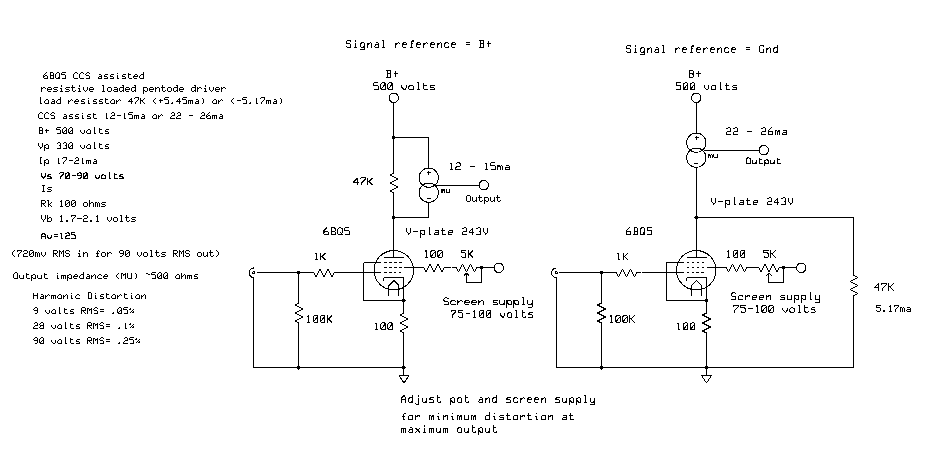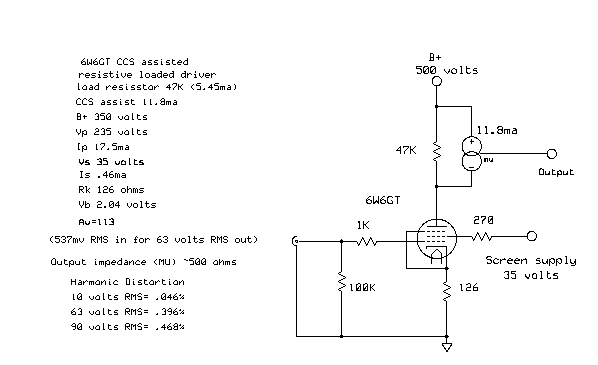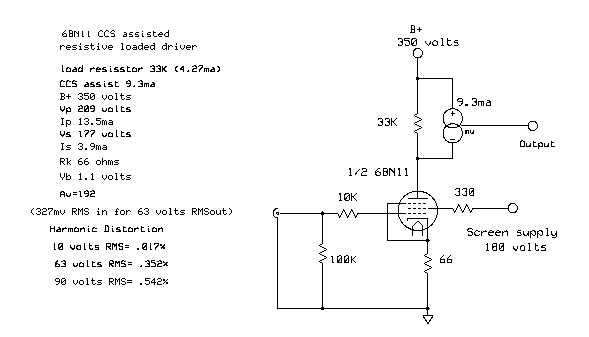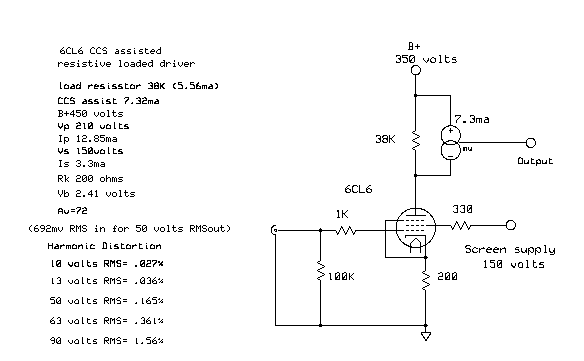Pentode with a CCS
Here are the results of some Pentode driver stage experiments done awhile back. The idea was to see what could be done combining Pentodes and CCS's. Generally, you can't load a Pentode with a CCS as you are effectively trying to series couple 2 CCS's. This issue is resolved by having a plate resistor in circuit so there is a defined resistance that the Pentode and CCS can work into.
In the driver experiments the plate resistor was increased to a value larger than in traditional Pentode driver stages to get more gain.A CCS was placed in parallel with the plate resistor to add plate current to compensate for the high value plate resistor. This allows you to have independent controls of the gain and operating current. The resistor is chosen to set the gain and the CCS is used to set the Pentode operating current.
To maximize the circuit performance the resistance in the screen circuit is adjusted for minimum distortion. There are draw backs to this- The circuit has to be tweaked for each tube. As adjusting the screen voltage and resistance also effects the gain of the stage you have to compromise some to have the gain match between 2 channels. This is not a circuit where you can swap tubes around without «calibrating» the stage on the test bench.
Another interesting way of applying the circuit is to place the plate resistor in parallel with the Pentode and have the CCS supply all the current needed by the stage. This allows the Pentode driver stage to have PSRR similar to CCS loaded triode stages. It also makes the signal current loop very small including only the Pentode, cathode, and plate resistors. The noise and capacitor colorations of the power supply are quite effectively removed.
Having the CCS in circuit allows you to use the MU output to drive the following stage. On the stages tested the MU output impedance was in the 500 ohm range.
Here is the schematic of a driver stage using a 6BQ5 Pentode and CCS combo. Highlights of the circuit performance are gain of 125, output impedance of 500 ohms and distortion of .25% at 90 volts RMS. Not many driver stages can do .25% at 90V RMS! The operating parameters and measurements are on the schematic.
Some more variants using different tubes-
The 6W6GT has good performance and operates at a very low screen voltage. The gain is slightly lower than the 6BQ5 version.
The 6BN11 also performs nicely but the gain is too high at 192 for practical uses.
The 6CL6 does not perform up the the standards of the other Pentodes tried.



